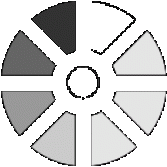Education System in Hungary
Hungary is located in central Europe and surrounded by Austria, Croatia, Serbia, Slovenia, Romania, Ukraine and Slovakia. Budapest, which is one of the largest cities in the Europe, is the capital city of the country. The capital city is termed as one of the most beautiful places of the world and stands amongst world’s favourite tourist destinations.
Schools and kindergartens in Hungary are established and monitored by state governments, local governments, legal entities such as churches, NGOs etc. and minority local governments. Nearly 90% of the children go to public sector institutions.
The Hungarian instructive framework went through sensational changes throughout the 1990s as the outcome of social, financial and political conversions occurring throughout this period. The communist instructive framework had three different levels. Primary instruction began at the age of 6. No less than 1 year in Kindergarten was needed before essential training. Essential instruction was necessary until the age of 14 i.e., essential education comprised of 8 evaluations. In auxiliary instruction, understudies had three choices.
The most tragic change in the instructive extension throughout the four decades of communism was perceptible around individuals with essential and brings down optional education: school participation at these levels of instruction headed off up to 95%. An alternate paramount change was the sharp expand of female interest rates in instructive establishments and the decreasing educational contrast between bigger urban communities and littler towns. Fulfillment rates have additionally expanded at each level of educating, while sexual orientation contrasts declined training framework.
Compulsory Education
Participation in education is mandatory between the ages of 5 and 18. At the end of upper secondary studies students must pass secondary school leaving examinations (erettsegi) in order to be admitted to higher education.
School Education System
Kindergarten education and care is available for children aged 3-6 and is compulsory from age 5. Primary and lower secondary education is provided in 8-grade single structure schools. However, general secondary schools are also allowed to offer single structure programmes starting from Grade 5 (8-grade secondary programmes) or Grade 7 (6-grade secondary programmes). Upon completion of lower secondary education, students continue their studies at upper secondary level in general secondary schools, vocational secondary schools or vocational schools. General secondary schools provide general education and prepare for the secondary school leaving examination (erettsegi) which is the prerequisite for admission to higher education.
Children in Hungary can choose among below mentioned schools as follows:Technical Schools- Special Technical Schools
- Secondary Vocational Schools
- General Secondary Schools
Schooling Structure in Hungary
Pre-Primary Schools: It is an essential part of education in Hungary. These schools are optional to attend but most parents prefer sending their wards to attend such institutions. Both public and privately run schools are making efforts to build strong base for children by making them learn computer use, sports activities and language learning.
Primary Schools: The primary school has 8 grades. However, some schools have 4 grades or some have 6 grades. After primary schools, students continue their education in 8-grade or 6-grade secondary school.
General Secondary Schools: Students planning to pursue their higher studies take admissions in general secondary schools. The schools provide four; six or eight-year-long courses and have wide ranging curricula.
Secondary Vocational Schools: These schools offer general and pre-vocational education in grades 9 to 12. The schools take secondary school leaving examination that qualifies the student to pursue higher education and take up vocational education.
Higher Education in Hungary
Higher Education Institutions can be established by the state or by private entities. The Ministry of National Resources is responsible for establishing general policy, regulatory and control related tasks in line with the provisions of the Act on Higher Education.
Higher Education in Hungary consists of double system with colleges and universities. Certain colleges are linked with universities and are functional as college faculties inside universities. Every university can also provide college level courses to the students. The time period of different courses at college level is minimum 3 years and maximum 4 years. However, the time period of different courses at university level is at least 4 years and maximum 5 years (with the exception of medical universities where it is 6 years).
 Processing...
Processing...
 Processing...
Processing...